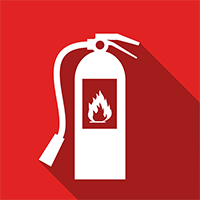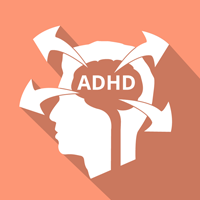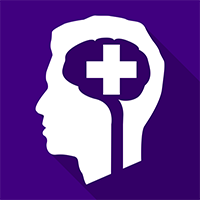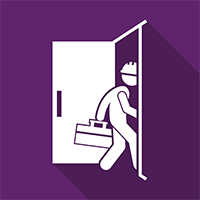- Produce, implement and communicate a mental health at work plan that promotes good mental health of all employees and outlines the support available for those who may need it
- Develop mental health awareness among employees by making information, tools and support accessible
- Encourage open conversations about mental health and the support available when employees are struggling, during the recruitment process and at regular intervals throughout employment, offer appropriate workplace adjustments to employees who require them
-
 One in four people in the UK will have a mental health problem at some point. While mental health problems are common, most are mild, tend to be short-term and are normally successfully treated, with medication, by a GP. Mental health is about how we think, feel and behave. Anxiety and depression are the most common mental health problems. They are often a reaction to a difficult life event, such as bereavement, but can also be caused by work-related issues. In 2017, the government commissioned Lord Stevenson and Paul Farmer (Chief Executive of Mind) to independently review the role employers can play to better support individuals with mental health conditions in the workplace. The ‘Core Standards’ recommend employers of all sizes can and should put in place:
One in four people in the UK will have a mental health problem at some point. While mental health problems are common, most are mild, tend to be short-term and are normally successfully treated, with medication, by a GP. Mental health is about how we think, feel and behave. Anxiety and depression are the most common mental health problems. They are often a reaction to a difficult life event, such as bereavement, but can also be caused by work-related issues. In 2017, the government commissioned Lord Stevenson and Paul Farmer (Chief Executive of Mind) to independently review the role employers can play to better support individuals with mental health conditions in the workplace. The ‘Core Standards’ recommend employers of all sizes can and should put in place: -
 We have an obligation to undertake an Individual Risk Assessment for any individuals with additional needs who work for us or attend our facilities. Our FREE template and guidance notes will enable you to sit down with the individual, or their parent/carer, and undertake a Risk Assessment to assist in providing the most appropriate care.
We have an obligation to undertake an Individual Risk Assessment for any individuals with additional needs who work for us or attend our facilities. Our FREE template and guidance notes will enable you to sit down with the individual, or their parent/carer, and undertake a Risk Assessment to assist in providing the most appropriate care. -
 In order to ensure that new and expectant mothers in early years provision and schools can work without unacceptable risks to their health and safety, employers must be aware of:
In order to ensure that new and expectant mothers in early years provision and schools can work without unacceptable risks to their health and safety, employers must be aware of:- any female workers who may be of child-bearing age
- the effects of the physiological, hormonal and psychological changes that occur during pregnancy and the postnatal nursing period
- any work activities, or aspects of the workplace, which may pose a particular risk to new and expectant mothers.
-
 Current legislation, The Regulatory Reform (Fire Safety) Order 2005, applies to all workplaces regardless of the number of employees and requires employers to provide adequate training in fire awareness for all staff members. Our Online Fire Extinguisher training course aims to give all employees a basic introduction to identifying the different types of extinguisher available, determining which is the best extinguisher for the fire and the protocol of extinguishing a fire. This Fire Extinguisher E-Learning Course provides training in the use of different fire extinguishers and the protocol of tackling a fire. It is a cost-effective way for employers to fulfil their legal obligation to provide their employees with the necessary understanding of fire extinguishers. Candidates can progress through the modules at their own pace and in their own time to fit the training in around their work and personal life. The Online Fire Extinguisher E-Learning course is approved by leading industry bodies: The Institute of Hospitality, IIRSM, Gatehouse Awards & CPD.
Current legislation, The Regulatory Reform (Fire Safety) Order 2005, applies to all workplaces regardless of the number of employees and requires employers to provide adequate training in fire awareness for all staff members. Our Online Fire Extinguisher training course aims to give all employees a basic introduction to identifying the different types of extinguisher available, determining which is the best extinguisher for the fire and the protocol of extinguishing a fire. This Fire Extinguisher E-Learning Course provides training in the use of different fire extinguishers and the protocol of tackling a fire. It is a cost-effective way for employers to fulfil their legal obligation to provide their employees with the necessary understanding of fire extinguishers. Candidates can progress through the modules at their own pace and in their own time to fit the training in around their work and personal life. The Online Fire Extinguisher E-Learning course is approved by leading industry bodies: The Institute of Hospitality, IIRSM, Gatehouse Awards & CPD.Fire Extinguisher Modules
Fire Extinguishers Pre-Engagement Action Using a Fire Extinguisher Approved by Institute of Hospitality, IIRSM, Gatehouse Awards & CPD – Duration 25 mins* -
 ADHD is a chronic condition that creates a range of persistent symptoms such as difficulty sustaining attention, hyperactivity and impulsive behaviour. The course covers the definitions of ADHD, the different types of ADHD and how to recognise some key signs and symptoms. Beyond this the course will look at some of the possible causes of ADHD, how it is diagnosed and how it can be treated, including environmental changes, types of therapy and medication that can be prescribed. Approved by CPD – Duration 45 mins*
ADHD is a chronic condition that creates a range of persistent symptoms such as difficulty sustaining attention, hyperactivity and impulsive behaviour. The course covers the definitions of ADHD, the different types of ADHD and how to recognise some key signs and symptoms. Beyond this the course will look at some of the possible causes of ADHD, how it is diagnosed and how it can be treated, including environmental changes, types of therapy and medication that can be prescribed. Approved by CPD – Duration 45 mins* -
 This course will provide you with an understanding of what autism is and how it affects a child’s daily life. It will touch on what factors contribute towards a child developing autism as well as some of the typical behaviours associated with it and how to can provide effective support for those with the condition. It also discusses what happens during the diagnosis process, some of the intervention methods that can help manage the condition and suggests some simple adaptations you can make to improve a child with autism’s day to day life. Approved by CPD – Duration 30 mins*
This course will provide you with an understanding of what autism is and how it affects a child’s daily life. It will touch on what factors contribute towards a child developing autism as well as some of the typical behaviours associated with it and how to can provide effective support for those with the condition. It also discusses what happens during the diagnosis process, some of the intervention methods that can help manage the condition and suggests some simple adaptations you can make to improve a child with autism’s day to day life. Approved by CPD – Duration 30 mins* -
 Diabetes is a serious lifelong health condition that occurs when the amount of glucose, or sugar, in the blood is too high. If left untreated, high blood glucose levels can cause serious health complications. This course is aimed at people working in the health and social care sector and will provide an overview of the condition, the common symptoms that might indicate someone has diabetes, methods of diagnosis, some possible treatments and common complications that can affect those with the condition. Approved by CPD – Duration 45 mins*
Diabetes is a serious lifelong health condition that occurs when the amount of glucose, or sugar, in the blood is too high. If left untreated, high blood glucose levels can cause serious health complications. This course is aimed at people working in the health and social care sector and will provide an overview of the condition, the common symptoms that might indicate someone has diabetes, methods of diagnosis, some possible treatments and common complications that can affect those with the condition. Approved by CPD – Duration 45 mins* -
 This course will give you an overview of epilepsy. It lists the methods of diagnosis, what a seizure is and how the brain can be affected. It will introduce some possible seizure triggers and describe what to do when someone has a seizure. It will also discuss some of the treatments offered to people with epilepsy and provide practical advice on what you can do if you witness someone having a seizure. Approved by CPD – Duration 30 mins*
This course will give you an overview of epilepsy. It lists the methods of diagnosis, what a seizure is and how the brain can be affected. It will introduce some possible seizure triggers and describe what to do when someone has a seizure. It will also discuss some of the treatments offered to people with epilepsy and provide practical advice on what you can do if you witness someone having a seizure. Approved by CPD – Duration 30 mins* -
 This course aims to provide a gentle introduction to the expectations of the Early Years Foundation Stage and it can also act as a refresher for those wanting to update their knowledge. It will introduce you to some of the key documents and legislation that relate to Early Years providers, the process for registering with Ofsted and the various policies and procedures that need to be in place. It also covers learning and development requirements, how to observe and assess the progress of children in your care and the safeguarding and welfare requirements laid out in the EYFS Framework. Approved by CPD – Duration 60 mins*
This course aims to provide a gentle introduction to the expectations of the Early Years Foundation Stage and it can also act as a refresher for those wanting to update their knowledge. It will introduce you to some of the key documents and legislation that relate to Early Years providers, the process for registering with Ofsted and the various policies and procedures that need to be in place. It also covers learning and development requirements, how to observe and assess the progress of children in your care and the safeguarding and welfare requirements laid out in the EYFS Framework. Approved by CPD – Duration 60 mins* -
 This course explains the difference between mental health and mental illness. It covers the symptoms of a number of the most common mental illnesses so you will know what to look out for or what to expect if you are working with someone with one of these conditions. As well as providing some practical advice on how you can work effectively with those affected by these conditions.
This course explains the difference between mental health and mental illness. It covers the symptoms of a number of the most common mental illnesses so you will know what to look out for or what to expect if you are working with someone with one of these conditions. As well as providing some practical advice on how you can work effectively with those affected by these conditions.Mental Health Awareness Course Modules
What is mental illness and prevalence rates Symptoms of Bi-Polar, depression, psychotic disorders and schizophrenia Symptoms of anxiety, personality disorder, self-harming Approved by CPD – Duration 25 mins* -

Working Together to Safeguard Children (2018) requires all providers working with children, young people and vulnerable adults to have a Safeguarding Policy in place.
Click below to purchase your Safeguarding Policy.
Following purchase please follow the link in your confirmation email and complete the Questionnaire. Your Safeguarding Policy will be emailed to you within 15mins of submitting the Questionnaire.
-
 Approved by Gatehouse Awards – Duration 30 mins*When people have good mental health, they are more likely to fulfil their potential. That means they enjoy work and cope easily with work situations. They have a happy family life and good social relationships. Organisations are required by law to promote and protect the mental well-being of their workforce. A comprehensive Mental Health Policy, along with easy-to-understand operating procedures, will incorporate mental health issues into established organisational thinking. It will make sure everyone knows how the organisation views and deals with workplace mental health. This online Developing a Workplace Mental Health Policy E-Learning course covers the steps that organisations should consider when developing and implementing a comprehensive workplace Mental Health Policy
Approved by Gatehouse Awards – Duration 30 mins*When people have good mental health, they are more likely to fulfil their potential. That means they enjoy work and cope easily with work situations. They have a happy family life and good social relationships. Organisations are required by law to promote and protect the mental well-being of their workforce. A comprehensive Mental Health Policy, along with easy-to-understand operating procedures, will incorporate mental health issues into established organisational thinking. It will make sure everyone knows how the organisation views and deals with workplace mental health. This online Developing a Workplace Mental Health Policy E-Learning course covers the steps that organisations should consider when developing and implementing a comprehensive workplace Mental Health PolicyDeveloping a Workplace Mental Health Policy Modules
Introduction Implementing a Workplace Mental Health Policy -
 Approved by Gatehouse Awards – Duration 90 mins*This Managing Occupational Health E-Learning course explains the key elements, procedures and activities involved in successful Occupational Health and Safety Management in the workplace. The online Managing Occupational Health course shows how professional Occupational Health and Safety Management benefits individuals and organisations. The online Managing Occupational Health course will investigate workplace health models, including the basic criteria of the World Health Organisation model. You’ll discover the importance of a Health Needs Assessment and how it leads to the development of a Heath Management Strategy. On a more practical level, the Managing Occupational Health E-Learning course will look at hazards, risks, controls and ‘Safe Systems of Work’ and the role played by health risk assessments. Turning to workplace well-being, we’ll explain how to promote healthy lifestyles and positive mental health. You’ll learn from the Managing Occupational Health online course, how to manage absences from work, both authorised and unauthorised, how to create an official Attendance Policy, manage the return-to-work process and deal effectively with absenteeism. Finally, the online Managing Occupational Health E-Learning course discusses the steps needed to develop and build a strong health and well-being culture, including leadership, communication, work-life balance and embracing change.
Approved by Gatehouse Awards – Duration 90 mins*This Managing Occupational Health E-Learning course explains the key elements, procedures and activities involved in successful Occupational Health and Safety Management in the workplace. The online Managing Occupational Health course shows how professional Occupational Health and Safety Management benefits individuals and organisations. The online Managing Occupational Health course will investigate workplace health models, including the basic criteria of the World Health Organisation model. You’ll discover the importance of a Health Needs Assessment and how it leads to the development of a Heath Management Strategy. On a more practical level, the Managing Occupational Health E-Learning course will look at hazards, risks, controls and ‘Safe Systems of Work’ and the role played by health risk assessments. Turning to workplace well-being, we’ll explain how to promote healthy lifestyles and positive mental health. You’ll learn from the Managing Occupational Health online course, how to manage absences from work, both authorised and unauthorised, how to create an official Attendance Policy, manage the return-to-work process and deal effectively with absenteeism. Finally, the online Managing Occupational Health E-Learning course discusses the steps needed to develop and build a strong health and well-being culture, including leadership, communication, work-life balance and embracing change.Managing Occupational Health Course Modules:
Introduction Occupational Health Basics Health Risk Assessments The Health Risk Assessment Process Long-Term Personal or Health Conditions Employee Well-being Substance Misuse Managing Absence Creating A Culture -
 Twitter is a social media platform that is used by a wide range of people, from celebrities, who use it to communicate with their fans to companies and brands who can use it to engage their customers and attract new ones. This courses will look in detail at the use of Twitter as part of your marketing activity.
Twitter is a social media platform that is used by a wide range of people, from celebrities, who use it to communicate with their fans to companies and brands who can use it to engage their customers and attract new ones. This courses will look in detail at the use of Twitter as part of your marketing activity. -
 This course explores the risk to workers caused by the Covid-19 virus and covers actions that can be taken by employers and employees to protect themselves and each other as they return to work. The content of this course is based on the latest information from the UK government and the NHS. It covers information about the virus, risk assessments and personal safety, along with how to make changes to the daily work environment to address these risks
This course explores the risk to workers caused by the Covid-19 virus and covers actions that can be taken by employers and employees to protect themselves and each other as they return to work. The content of this course is based on the latest information from the UK government and the NHS. It covers information about the virus, risk assessments and personal safety, along with how to make changes to the daily work environment to address these risks -
 Electricity is the lifeblood of modern society, it enhances our quality of life and we are becoming increasingly reliant on it to power tools and devices we use for work and entertainment. However, although electricity has many benefits it can also be a hidden killer as it can’t be seen, felt, smelled or heard until someone comes into contact with it. This online Electrical Safety E-Learning course will start by covering the many benefits electricity brings to society and its key components voltage, current, and resistance. The Electrical Safety online course will explain the two main types of electricity, cover UK accident and death statistics, and describe a simple way of remembering the electrical hazards. The online Electrical Safety course then goes on to provide basic instructions about how you could safely help someone you suspect has received an electric shock. Towards the end of the Electrical Safety E-Learning course it includes an overview of the main standards, guidance and legislation that control the use of electricity in the workplace, and finish off by looking at simple maintenance plans and portable appliance testing including who within an organisation would be best to carry out the various checks. Training staff in Electrical Safety is vital to protect your employees and allow them to understand their role and responsibilities regarding Electrical Safety in the workplace. IIRSM approval means that this course can be used in the future by those that need to prove they are continually developing themselves.
Electricity is the lifeblood of modern society, it enhances our quality of life and we are becoming increasingly reliant on it to power tools and devices we use for work and entertainment. However, although electricity has many benefits it can also be a hidden killer as it can’t be seen, felt, smelled or heard until someone comes into contact with it. This online Electrical Safety E-Learning course will start by covering the many benefits electricity brings to society and its key components voltage, current, and resistance. The Electrical Safety online course will explain the two main types of electricity, cover UK accident and death statistics, and describe a simple way of remembering the electrical hazards. The online Electrical Safety course then goes on to provide basic instructions about how you could safely help someone you suspect has received an electric shock. Towards the end of the Electrical Safety E-Learning course it includes an overview of the main standards, guidance and legislation that control the use of electricity in the workplace, and finish off by looking at simple maintenance plans and portable appliance testing including who within an organisation would be best to carry out the various checks. Training staff in Electrical Safety is vital to protect your employees and allow them to understand their role and responsibilities regarding Electrical Safety in the workplace. IIRSM approval means that this course can be used in the future by those that need to prove they are continually developing themselves.Electrical Safety Modules
Overview and Benefits of Electricity What is Electricity? How Electricity Can Cause Harm Legislation, Standards and Key Steps PAT Testing Standards and Guidance Approved by IIRSM – Duration 45 mins* -
 Current legislation, The Regulatory Reform (Fire Safety) Order 2005, applies to all workplaces regardless of the number of employees and requires employers to provide adequate training in fire awareness for all members of their staff. Our Online Fire Marshal training courses are aimed at all employees to assist them in identifying and reducing the risk that fire presents in the workplace. Fire marshals (sometimes known as fire wardens) are civilians trained to assist in emergency fire evacuation procedures at businesses and other organizations. It is a legal obligation that workplaces must have sufficient fire marshals to deal with fire emergencies. This Fire Marshal E-Learning training course provides extensive knowledge of fire prevention, evacuation protocol and using fire extinguishers. It is a cost-effective way for employers to fulfil their legal obligation to provide their employees with the necessary understanding of fire awareness. Candidates can progress through the modules at their own pace and in their own time to fit the training in around their work and personal life. The Fire Marshal E-Learning course is approved by leading industry bodies: The Institute of Hospitality, IIRSM, Gatehouse Awards & CPD Please note, this course also contains all of the content in the Basic Fire Awareness and Fire Extinguisher courses.
Current legislation, The Regulatory Reform (Fire Safety) Order 2005, applies to all workplaces regardless of the number of employees and requires employers to provide adequate training in fire awareness for all members of their staff. Our Online Fire Marshal training courses are aimed at all employees to assist them in identifying and reducing the risk that fire presents in the workplace. Fire marshals (sometimes known as fire wardens) are civilians trained to assist in emergency fire evacuation procedures at businesses and other organizations. It is a legal obligation that workplaces must have sufficient fire marshals to deal with fire emergencies. This Fire Marshal E-Learning training course provides extensive knowledge of fire prevention, evacuation protocol and using fire extinguishers. It is a cost-effective way for employers to fulfil their legal obligation to provide their employees with the necessary understanding of fire awareness. Candidates can progress through the modules at their own pace and in their own time to fit the training in around their work and personal life. The Fire Marshal E-Learning course is approved by leading industry bodies: The Institute of Hospitality, IIRSM, Gatehouse Awards & CPD Please note, this course also contains all of the content in the Basic Fire Awareness and Fire Extinguisher courses.Fire Marshal Modules
Chemistry of Fire Common Causes of Fire Basic Safety Features in Buildings Introduction to Fire Extinguishers What to do in Cases of Fire? Fire Statistics Current Fire Safety Legislation Fire Risk Preventative Measures Safety Features within Buildings Role of the Fire Marshal Action on Fire Discovery Fire Drills and Evacuation Fire Extinguishers Pre-Engagement Action Using a Fire Extinguisher Approved by Institute of Hospitality, IIRSM, Gatehouse Awards & CPD – Duration 220 mins* -
 At the end of this course, candidates will have an understanding of what a risk assessment is and how to complete one. To achieve this the course will define important terms, provide some basic background information to explain how important risk assessments are and discuss some of the legislation that applies. It will then go on to provide practical advice on how to identify hazards and analyse risk before finishing off by explaining the responsibilities of both employers and employees with regards to risk assessment. Approved by IIRSM & CPD- Duration 90 mins*
At the end of this course, candidates will have an understanding of what a risk assessment is and how to complete one. To achieve this the course will define important terms, provide some basic background information to explain how important risk assessments are and discuss some of the legislation that applies. It will then go on to provide practical advice on how to identify hazards and analyse risk before finishing off by explaining the responsibilities of both employers and employees with regards to risk assessment. Approved by IIRSM & CPD- Duration 90 mins* -
 Our Online Adult Safeguarding course has been created because, first and foremost, every one of us has basic human rights. Chief among these is the right to be healthy, happy and treated well, regardless of race, age, sex or location. When these rights are abused in some way, it’s wrong. Therefore, it is vital that guidelines, policies, and procedures are followed to enable everyone, without exception, to live a life in which these basic values and rights are maintained and upheld. Every person, regardless of their age, sex, religion, ethnicity or background has the right to a healthy, happy life. Adult safeguarding is about minimising and managing the risks to vulnerable individuals. This Safeguarding Adults E-Learning Course is aimed at anyone who has a duty of care for, or comes into contact with, adults in need of care and support, either as a paid professional or a volunteer. This includes, but isn’t limited to, those that work in domiciliary care, the NHS, community centres, prisons or with a family member at home, and sets out the roles and responsibilities everyone must undertake to protect an adult’s right to live in safety, free from abuse and neglect. You and the organisation you work for must take appropriate and proportional measures necessary for the protection of adults in your care, while still ensuring they are supported and empowered to have control over how they want to live their lives and this course can bring you one step closer to being able to do this. This means that whatever the circumstance, you and the organisation you work for must take appropriate and proportional measures necessary for the protection of adults in your care, while still ensuring they are supported and empowered to control how they want to live their lives. During this Online Safeguarding E-Learning Course you will hear many facts, figures and details surrounding the risk to adults in need of care and support, the types of abuse suffered and key safeguarding legislation put in place to minimise the abuse of adults with care and support needs. By the end of this Online Adult Safeguarding Course, you will have learned a better understanding of safeguarding principles and be able to apply them to your role. This includes being able to define the key terminology in relation to safeguarding; identify the principle laws that relate to safeguarding and why they have been put in place to minimise abuse; recognise and respond to the ten types of abuse suffered by vulnerable adults; identify and report concerns of abuse or neglect; describe your role, responsibilities and boundaries; ensure people are supported and encouraged to make their own decisions and give informed consent, and finally manage the environment to minimise the risk of abuse. This Safeguarding Adults Online Course is approved by leading industry body CPD
Our Online Adult Safeguarding course has been created because, first and foremost, every one of us has basic human rights. Chief among these is the right to be healthy, happy and treated well, regardless of race, age, sex or location. When these rights are abused in some way, it’s wrong. Therefore, it is vital that guidelines, policies, and procedures are followed to enable everyone, without exception, to live a life in which these basic values and rights are maintained and upheld. Every person, regardless of their age, sex, religion, ethnicity or background has the right to a healthy, happy life. Adult safeguarding is about minimising and managing the risks to vulnerable individuals. This Safeguarding Adults E-Learning Course is aimed at anyone who has a duty of care for, or comes into contact with, adults in need of care and support, either as a paid professional or a volunteer. This includes, but isn’t limited to, those that work in domiciliary care, the NHS, community centres, prisons or with a family member at home, and sets out the roles and responsibilities everyone must undertake to protect an adult’s right to live in safety, free from abuse and neglect. You and the organisation you work for must take appropriate and proportional measures necessary for the protection of adults in your care, while still ensuring they are supported and empowered to have control over how they want to live their lives and this course can bring you one step closer to being able to do this. This means that whatever the circumstance, you and the organisation you work for must take appropriate and proportional measures necessary for the protection of adults in your care, while still ensuring they are supported and empowered to control how they want to live their lives. During this Online Safeguarding E-Learning Course you will hear many facts, figures and details surrounding the risk to adults in need of care and support, the types of abuse suffered and key safeguarding legislation put in place to minimise the abuse of adults with care and support needs. By the end of this Online Adult Safeguarding Course, you will have learned a better understanding of safeguarding principles and be able to apply them to your role. This includes being able to define the key terminology in relation to safeguarding; identify the principle laws that relate to safeguarding and why they have been put in place to minimise abuse; recognise and respond to the ten types of abuse suffered by vulnerable adults; identify and report concerns of abuse or neglect; describe your role, responsibilities and boundaries; ensure people are supported and encouraged to make their own decisions and give informed consent, and finally manage the environment to minimise the risk of abuse. This Safeguarding Adults Online Course is approved by leading industry body CPDSafeguarding Adults Course Modules
Introduction and Definitions Types of Abuse and the Rights of Vulnerable Recognising the Signs of Abuse What to Do if you Suspect abuse Safeguarding Legislation Approved by CPD – Duration 75 mins* -
 Our Safeguarding Children Online Course has been created because, first and foremost, each and every one of us has basic human rights. Chief among these is the right to be healthy, happy and treated well, regardless of race, age, sex or location. When these rights are abused in some way, it’s wrong. Therefore, it is vital that guidelines, policies, and procedures are followed to enable everyone, without exception, to live a life in which these basic values and rights are maintained and upheld. Regardless of their age, sex, religion, ethnicity, or background, every child has the right to a healthy, happy life. Child safeguarding is about minimising and managing the risks to vulnerable individuals, particularly children. Although most children are brought up in loving, nurturing environments and grow up to lead happy lives, the subject has to be discussed to better protect those children who need it most. During this Online Safeguarding Children course you will hear many facts, figures and details surrounding the risk to children, the types of abuse suffered, how to recognise the signs of abuse and key safeguarding legislations put in place to minimise the abuse of children. Once you are able to recognise the signs of possible abuse, and know the steps you should take if you suspect it you will be better able to protect the children in your care. This Safeguarding Children Online Course is approved by leading industry body CPD
Our Safeguarding Children Online Course has been created because, first and foremost, each and every one of us has basic human rights. Chief among these is the right to be healthy, happy and treated well, regardless of race, age, sex or location. When these rights are abused in some way, it’s wrong. Therefore, it is vital that guidelines, policies, and procedures are followed to enable everyone, without exception, to live a life in which these basic values and rights are maintained and upheld. Regardless of their age, sex, religion, ethnicity, or background, every child has the right to a healthy, happy life. Child safeguarding is about minimising and managing the risks to vulnerable individuals, particularly children. Although most children are brought up in loving, nurturing environments and grow up to lead happy lives, the subject has to be discussed to better protect those children who need it most. During this Online Safeguarding Children course you will hear many facts, figures and details surrounding the risk to children, the types of abuse suffered, how to recognise the signs of abuse and key safeguarding legislations put in place to minimise the abuse of children. Once you are able to recognise the signs of possible abuse, and know the steps you should take if you suspect it you will be better able to protect the children in your care. This Safeguarding Children Online Course is approved by leading industry body CPDSafeguarding Children (Level 1) Course Modules
Introduction to Safeguarding Children Types of Abuse, who may carry it out and why children may not tell How to Recognise the Signs of Abuse What to do if you suspect a child is being abused Safeguarding Legislation Approved by CPD – Duration 75 mins* -
 The General Data Protection Regulation (GDPR) is designed to strengthen and unify data protection principles for all individuals within the European Union and the European Economic Area. The GDPR is an incredibly important change to data privacy regulations. Understanding its correct implementation is vital for all UK businesses and organisations, particularly for staff who regularly deal with personal data. This online Introducing GDPR E-Learning course is designed specially for those front line staff and provides a clear introduction to the main elements of the GDPR, including compliance and the consequences of non-compliance. The Introducing GDPR e-learning course explains the roles of key players – Data Protection Officers, Data Controllers, Data Protection Leads and Data Processors and covers the main categories of personal data, along with the six lawful bases for processing data, and how to audit the data your organisation holds. Other topics examined include the Seven Principles of the GDPR and the Eight Rights for Individuals, along with the importance of your Privacy Policy – how to construct one, and how to use it effectively when dealing with data subjects. Finally, there’s important information on data breaches; how to avoid them, what to do if one is discovered and how to file a breach report.
The General Data Protection Regulation (GDPR) is designed to strengthen and unify data protection principles for all individuals within the European Union and the European Economic Area. The GDPR is an incredibly important change to data privacy regulations. Understanding its correct implementation is vital for all UK businesses and organisations, particularly for staff who regularly deal with personal data. This online Introducing GDPR E-Learning course is designed specially for those front line staff and provides a clear introduction to the main elements of the GDPR, including compliance and the consequences of non-compliance. The Introducing GDPR e-learning course explains the roles of key players – Data Protection Officers, Data Controllers, Data Protection Leads and Data Processors and covers the main categories of personal data, along with the six lawful bases for processing data, and how to audit the data your organisation holds. Other topics examined include the Seven Principles of the GDPR and the Eight Rights for Individuals, along with the importance of your Privacy Policy – how to construct one, and how to use it effectively when dealing with data subjects. Finally, there’s important information on data breaches; how to avoid them, what to do if one is discovered and how to file a breach report.Introducing GDPR Modules
Introduction Data Processing Types of Data Data Subjects’ Rights Data Breaches Approved by CPD – Duration 60 mins* -
 This online Workplace Health and Safety E-Learning course covers general health and safety issues that apply to a wide range of types of businesses and sectors, from office and retail environments to workshops and factories. The wide range of topics covered makes this a great course to act as an introduction to health and safety in the workplace that can then be built on with more detailed courses that cover specific hazards that employees might come into contact with in specific workplaces. This makes it a useful part of the induction process. By the end of this Workplace Health and Safety E-Learning course the candidate will have an understanding of health and safety legislation and definitions of common terms associated with health and safety. This is followed up with some statistics outlining the most common causes of accidents in the workplace. They will also understand good practice in relation to electricity, display screen equipment and the use of safe manual handling techniques. The course also introduces best practice associated with the control of substances hazardous to health regulations, the importance of using appropriate PPE as instructed and the most common procedures to follow in the event of a fire. The Workplace Health and Safety online course contains specific case studies that outline the seriousness of health and safety in the workplace and potential consequences if there is a health and safety breach. Along with all this it introduces the concept of risk assessment and concludes with the actions that should be taken in the event of an emergency situation occurring.
This online Workplace Health and Safety E-Learning course covers general health and safety issues that apply to a wide range of types of businesses and sectors, from office and retail environments to workshops and factories. The wide range of topics covered makes this a great course to act as an introduction to health and safety in the workplace that can then be built on with more detailed courses that cover specific hazards that employees might come into contact with in specific workplaces. This makes it a useful part of the induction process. By the end of this Workplace Health and Safety E-Learning course the candidate will have an understanding of health and safety legislation and definitions of common terms associated with health and safety. This is followed up with some statistics outlining the most common causes of accidents in the workplace. They will also understand good practice in relation to electricity, display screen equipment and the use of safe manual handling techniques. The course also introduces best practice associated with the control of substances hazardous to health regulations, the importance of using appropriate PPE as instructed and the most common procedures to follow in the event of a fire. The Workplace Health and Safety online course contains specific case studies that outline the seriousness of health and safety in the workplace and potential consequences if there is a health and safety breach. Along with all this it introduces the concept of risk assessment and concludes with the actions that should be taken in the event of an emergency situation occurring.Workplace Health & Safety Course Modules
What Is Health and Safety? Case Studies Corporate Manslaughter Accidents Fire, Electricity, DSE and Manual Handling Emergencies, CoSHH, PPE and Stress Approved by IIRSM & CPD - Duration 45 mins* -
 Intelligence indicates that further terrorist attacks in our country are ‘highly likely’. Experience tells us that the threat comes not just from foreign nationals but from terrorists born and bred in Britain. Therefore, it is vital that our counter-terrorism strategy contains a plan to prevent radicalisation and stop would-be terrorists from committing mass murder. The Prevent strategy, published by the Government is part of the overall counter-terrorism strategy. This online Prevent Duty E-Learning Course starts with an overview of the Government’s Prevent strategy, and then looks at some of the reasons people become extremists. The Prevent Duty Online Course goes on to cover the objectives of the Prevent strategy, how to base your actions on a risk-based approach, what to do if you are concerned and much more. Introduction to the Course What is Prevent? Prevent Objectives Delivering Prevent with a Risk-Based Approach Extremism, Radicalisation and Terrorism What Should You Do If You Are Concerned? The Channel Process British Values Approved by CPD - Duration 65 mins*
Intelligence indicates that further terrorist attacks in our country are ‘highly likely’. Experience tells us that the threat comes not just from foreign nationals but from terrorists born and bred in Britain. Therefore, it is vital that our counter-terrorism strategy contains a plan to prevent radicalisation and stop would-be terrorists from committing mass murder. The Prevent strategy, published by the Government is part of the overall counter-terrorism strategy. This online Prevent Duty E-Learning Course starts with an overview of the Government’s Prevent strategy, and then looks at some of the reasons people become extremists. The Prevent Duty Online Course goes on to cover the objectives of the Prevent strategy, how to base your actions on a risk-based approach, what to do if you are concerned and much more. Introduction to the Course What is Prevent? Prevent Objectives Delivering Prevent with a Risk-Based Approach Extremism, Radicalisation and Terrorism What Should You Do If You Are Concerned? The Channel Process British Values Approved by CPD - Duration 65 mins* -
 Around 17,000 people in the UK suffer deafness, ringing in the ears or other ear conditions caused by excessive noise at work. However, this damage is preventable if the right steps are taken but once your hearing has gone it will not come back. This Noise Awareness online course starts by going into detail about how dangerous noise can be in the workplace, and the main safety issues you should be aware of. The online Noise Awareness E-Learning course will take you through some of the simple science, the main laws that apply and introduce you to noise level limits. The Noise Awareness E-Learning course also covers some of the specific health risks and how to avoid them by producing risk assessments, action plans and providing appropriate Personal Protective Equipment. The online Noise Awareness course will conclude by examining how to provide information and instructions to employees, along with the most professional way to conduct workforce health surveillance. One of the key points this Noise Awareness online course is intended to teach is why it is so important to undertake and action points outlined in a noise risk assessment. This may include the use of PPE, limiting how long workers are exposed to noise or a number of other control measures that must be understood and followed. Understanding the risks and why controls are in place will mean workers are much more likely to consistently adhere to them. Noise in the Workplace Legislation Health Risks Action Plans Prioritising Controls Personal Protective Equipment Information and Health Surveillance Approved by IIRSM & CPD - Duration 55 mins*
Around 17,000 people in the UK suffer deafness, ringing in the ears or other ear conditions caused by excessive noise at work. However, this damage is preventable if the right steps are taken but once your hearing has gone it will not come back. This Noise Awareness online course starts by going into detail about how dangerous noise can be in the workplace, and the main safety issues you should be aware of. The online Noise Awareness E-Learning course will take you through some of the simple science, the main laws that apply and introduce you to noise level limits. The Noise Awareness E-Learning course also covers some of the specific health risks and how to avoid them by producing risk assessments, action plans and providing appropriate Personal Protective Equipment. The online Noise Awareness course will conclude by examining how to provide information and instructions to employees, along with the most professional way to conduct workforce health surveillance. One of the key points this Noise Awareness online course is intended to teach is why it is so important to undertake and action points outlined in a noise risk assessment. This may include the use of PPE, limiting how long workers are exposed to noise or a number of other control measures that must be understood and followed. Understanding the risks and why controls are in place will mean workers are much more likely to consistently adhere to them. Noise in the Workplace Legislation Health Risks Action Plans Prioritising Controls Personal Protective Equipment Information and Health Surveillance Approved by IIRSM & CPD - Duration 55 mins* -
 The alcohol licensing laws of the United Kingdom regulate the sale and consumption of alcohol. It is important for anyone working in licensed premises to have a basic understanding of these laws and how they apply to them. This online Licensed Premises Staff Training E-Learning course starts with an overview of UK alcohol licensing laws and the importance of the four key licensing objectives. The Licensed Premises Staff Training online course will also discuss mandatory conditions, which are compulsory for all licensed premises and looks in detail at the major issue of age verification. Finally, the Licensed Premises Staff Training online course outlines the responsibilities involved in alcohol retailing, including drinking guidelines and how to avoid and reduce conflict. This Licensed Premises Staff Training E-Learning course is aimed at anyone working in licensed premises. This Licensed Premises Staff Training online course could be included as part of the induction process or used to further enhance existing staff’s understanding of their responsibilities.
The alcohol licensing laws of the United Kingdom regulate the sale and consumption of alcohol. It is important for anyone working in licensed premises to have a basic understanding of these laws and how they apply to them. This online Licensed Premises Staff Training E-Learning course starts with an overview of UK alcohol licensing laws and the importance of the four key licensing objectives. The Licensed Premises Staff Training online course will also discuss mandatory conditions, which are compulsory for all licensed premises and looks in detail at the major issue of age verification. Finally, the Licensed Premises Staff Training online course outlines the responsibilities involved in alcohol retailing, including drinking guidelines and how to avoid and reduce conflict. This Licensed Premises Staff Training E-Learning course is aimed at anyone working in licensed premises. This Licensed Premises Staff Training online course could be included as part of the induction process or used to further enhance existing staff’s understanding of their responsibilities.Licensed Premises Staff Training Modules
Introduction Premises Licences Personal Licences and Club Premises Certificates Dealing With Licensing Authorities Types of Businesses Selling Alcohol Representations and Mandatory Conditions Licensing Authority Powers Children and Under 18s Responsibility in Alcohol Retailing Approved by CPD & Institute of Hospitality - Duration 60 mins* -
 Every day, thousands of people are exposed to situations where they are left alone in work premises, when visiting members of the public during their working day, or working from home. There are many risks associated with working in isolation, without the support of colleagues. These risks can include accidents and violence. This online Introduction to Personal Safety for Lone Workers course acts as an introduction to personal safety for lone workers and applies to those that work alone within business premises, mobile workers and homeworkers. This Introduction to Personal Safety for Lone Workers online course covers the legal responsibilities of both employers and employees, some of the common security precautions that can be implemented, practical steps you can take to avoid conflict in lone worker situations and other elements that can contribute to lone worker safety.
Every day, thousands of people are exposed to situations where they are left alone in work premises, when visiting members of the public during their working day, or working from home. There are many risks associated with working in isolation, without the support of colleagues. These risks can include accidents and violence. This online Introduction to Personal Safety for Lone Workers course acts as an introduction to personal safety for lone workers and applies to those that work alone within business premises, mobile workers and homeworkers. This Introduction to Personal Safety for Lone Workers online course covers the legal responsibilities of both employers and employees, some of the common security precautions that can be implemented, practical steps you can take to avoid conflict in lone worker situations and other elements that can contribute to lone worker safety.Introduction to Personal Safety for Lone Workers Modules
Lone Worker Personal Safety: The Basics The Law: Responsibilities Assessing the Risks Personal Safety Solutions Practical Tips to Avoid Conflict Reporting and Recording Incidents Approved by IIRSM & IOSH - Duration 45 mins* -
 The Health and Safety (Display Screen Equipment) Regulations contain special directives covering DSE safety. Both employers and employee‐users have responsibilities under the legislation So what do we mean by display screen equipment? The first thing most people think of is a computer monitor. But that’s not the only thing it refers to display screen equipment could also mean laptops, tablet PCs, televisions, smartphones, CNC control pads, portable diagnostic screens or equipment containing cathode ray tubes, or CRTs. Our Display Screen Equipment Awareness E-Learning course is aimed at users of display screen equipment (DSE) and those responsible for assessing display screen equipment. A ‘user’ is anyone who regularly uses display screen equipment for a significant part of their normal work. In practice, if you use display screen equipment continuously for more than one hour a day, then you’re a ‘user’. This Online Display Screen Equipment Awareness E-Learning course fulfils your statutory training obligations and covers, among other things; the correct way to set up and use your display screen equipment safely. Reducing the risk of work related conditions.
The Health and Safety (Display Screen Equipment) Regulations contain special directives covering DSE safety. Both employers and employee‐users have responsibilities under the legislation So what do we mean by display screen equipment? The first thing most people think of is a computer monitor. But that’s not the only thing it refers to display screen equipment could also mean laptops, tablet PCs, televisions, smartphones, CNC control pads, portable diagnostic screens or equipment containing cathode ray tubes, or CRTs. Our Display Screen Equipment Awareness E-Learning course is aimed at users of display screen equipment (DSE) and those responsible for assessing display screen equipment. A ‘user’ is anyone who regularly uses display screen equipment for a significant part of their normal work. In practice, if you use display screen equipment continuously for more than one hour a day, then you’re a ‘user’. This Online Display Screen Equipment Awareness E-Learning course fulfils your statutory training obligations and covers, among other things; the correct way to set up and use your display screen equipment safely. Reducing the risk of work related conditions.Display Screen Equipment Awareness Modules
Introduction Legislation Protecting Your Body Adjusting Your Chair Adjusting Your Screen Work Arrangements Adjusting the Layout of Your Workstation Adjusting Your Work Environment Approved by IIRSM & CPD - Duration 50 mins* -
 This course covers what you need to know about the Control of Substances Hazardous to Health (COSHH) So what do we mean by ‘Substances Hazardous to Health’? In legal terms, these are substances that are classified as “very toxic, toxic, harmful, corrosive or Irritant” under the Classification, Labelling and Packaging Regulation (CLP). This was a new regulation that came into force in January 2009 dovetailing with a set of regulations called REACH. REACH is a European Union regulation concerning the Registration, Evaluation, Authorisation and Restriction of Chemicals, which came into force on 1st June 2007. One of the main aims of REACH is to provide a high level of protection for human health and the environment from the use of chemicals. This Online Control of Substances Hazardous to Health (COSHH) course is aimed at anyone exposed to Substances Hazardous to Health at work and line managers with responsibility for such people. This Online Control of Substances Hazardous to Health (COSHH) E-Learning course will provide candidates with an understanding of substances that cause hazards to health in their work life and guidance on exposure, legislation and risk assessment.
This course covers what you need to know about the Control of Substances Hazardous to Health (COSHH) So what do we mean by ‘Substances Hazardous to Health’? In legal terms, these are substances that are classified as “very toxic, toxic, harmful, corrosive or Irritant” under the Classification, Labelling and Packaging Regulation (CLP). This was a new regulation that came into force in January 2009 dovetailing with a set of regulations called REACH. REACH is a European Union regulation concerning the Registration, Evaluation, Authorisation and Restriction of Chemicals, which came into force on 1st June 2007. One of the main aims of REACH is to provide a high level of protection for human health and the environment from the use of chemicals. This Online Control of Substances Hazardous to Health (COSHH) course is aimed at anyone exposed to Substances Hazardous to Health at work and line managers with responsibility for such people. This Online Control of Substances Hazardous to Health (COSHH) E-Learning course will provide candidates with an understanding of substances that cause hazards to health in their work life and guidance on exposure, legislation and risk assessment.Control of Substances Hazardous to Health (COSHH) Modules
Introducing COSHH Different Types of Hazard Different Types of Exposure Regulations and Approved Labelling Assessing COSHH Risks The Risk Assessment in Practice Exposure Control Staying in Control Training and Emergency Planning Course Summary Approved by IIRSM & Institute of Hospitality - Duration 125 mins* -
 Mental Health First Aid teaches participants how to notice and support individuals who may be experiencing mental health issues or exhibiting the signs of substance use in a work environment. They are also taught how to connect those people with appropriate help from fellow employees, community resources or healthcare professionals. Around 25 per cent of the UK population will experience a mental health problem at some point in their lives. Most are mild, tend to be short-term and are usually treated successfully with therapy and medication. But it is still a significant problem. Mental Health First Aid teaches participants how to notice and support individuals who may be experiencing mental health issues or exhibiting the signs of substance use in a work environment. They are also taught how to connect those people with appropriate help from fellow employees, community resources or healthcare professionals. The course introduces the subject and outlines the benefits of Mental Health first aid and workplace wellness schemes. It then goes on to cover the effects of stress on individuals and teams and discusses how stress and mental health are linked. It then covers the roles of employers, managers and employees in ensuring that a Mental Health First Aid programme is successful. It concludes with a series of practical examples of how to apply mental health first aid to real situations, how to support employees who are experiencing mental health issues and where to point them for further help and advice. Approved by Gatehouse Awards – Duration 90 mins*
Mental Health First Aid teaches participants how to notice and support individuals who may be experiencing mental health issues or exhibiting the signs of substance use in a work environment. They are also taught how to connect those people with appropriate help from fellow employees, community resources or healthcare professionals. Around 25 per cent of the UK population will experience a mental health problem at some point in their lives. Most are mild, tend to be short-term and are usually treated successfully with therapy and medication. But it is still a significant problem. Mental Health First Aid teaches participants how to notice and support individuals who may be experiencing mental health issues or exhibiting the signs of substance use in a work environment. They are also taught how to connect those people with appropriate help from fellow employees, community resources or healthcare professionals. The course introduces the subject and outlines the benefits of Mental Health first aid and workplace wellness schemes. It then goes on to cover the effects of stress on individuals and teams and discusses how stress and mental health are linked. It then covers the roles of employers, managers and employees in ensuring that a Mental Health First Aid programme is successful. It concludes with a series of practical examples of how to apply mental health first aid to real situations, how to support employees who are experiencing mental health issues and where to point them for further help and advice. Approved by Gatehouse Awards – Duration 90 mins* -
 This online course covers a range of important topics related to mental health conditions that children and young people can experience and the many ways they can be offered support. The Children and Young People’s Mental Health course starts by defining mental illness and mental health problems and their impact on children and young people. There’s extensive coverage of the many types of mental illnesses found in this group, and how they can be recognised and treated. This online Children and Young People’s Mental Health course will look at attention deficit hyperactivity disorder, depression and self-harm, and eating disorders, including anorexia, bulimia, and binge eating. Other mental illnesses covered include schizophrenia, autism, learning difficulties, post-traumatic stress disorder, bipolar disorder, panic disorder, sleep apnoea and social phobia. Children and Young People’s Mental Health online course will discuss symptoms and causes – and the actions to take if you suspect someone has a mental health condition. The online Children and Young People’s Mental Health course will discuss the role of mental healthcare professionals, such as a psychologists, psychiatrists, psychiatric nurses or clinical social workers – and show how parents can become involved. Treatments covered include psychotherapy, mindfulness, play therapy, cognitive behavioural therapy and medication. The Children and Young People’s Mental Health E-leaning course will deal with prognosis and prevention – and show how to promote positive mental health and dispel common myths. Finally, you’ll learn practical techniques to help you talk to children or young people about their mental health.
This online course covers a range of important topics related to mental health conditions that children and young people can experience and the many ways they can be offered support. The Children and Young People’s Mental Health course starts by defining mental illness and mental health problems and their impact on children and young people. There’s extensive coverage of the many types of mental illnesses found in this group, and how they can be recognised and treated. This online Children and Young People’s Mental Health course will look at attention deficit hyperactivity disorder, depression and self-harm, and eating disorders, including anorexia, bulimia, and binge eating. Other mental illnesses covered include schizophrenia, autism, learning difficulties, post-traumatic stress disorder, bipolar disorder, panic disorder, sleep apnoea and social phobia. Children and Young People’s Mental Health online course will discuss symptoms and causes – and the actions to take if you suspect someone has a mental health condition. The online Children and Young People’s Mental Health course will discuss the role of mental healthcare professionals, such as a psychologists, psychiatrists, psychiatric nurses or clinical social workers – and show how parents can become involved. Treatments covered include psychotherapy, mindfulness, play therapy, cognitive behavioural therapy and medication. The Children and Young People’s Mental Health E-leaning course will deal with prognosis and prevention – and show how to promote positive mental health and dispel common myths. Finally, you’ll learn practical techniques to help you talk to children or young people about their mental health.Children and Young People’s Mental Health Course Modules:
Introduction Mental illnesses in children and young adults: Part 1 Mental illnesses in children and young adults: Part 2 Mental illnesses in children and young adults: Part 3 Diagnosis and treatments Prognoses and outcomes Support Signs of mental illness in children and young people Approved by Gatehouse Awards – Duration 90 mins* -

The Management of Health and Safety at Work Regulations 1999 requires all employers to have a Health and Safety Policy and undertake a General Risk Assessment appropriate to their business.
Our online Risk Management tool produces a comprehensive Health and Safety Policy and General Risk Assessment covering all aspects of operating a Dance and Drama School including;
- Teaching and coaching staff failing to act appropriately
- Lack of insurance
- Lack of qualified First Aider(s) and first aid kit
- Lack of understanding and support from venue, support staff, and delivery workers
- Failing to secure data leading to a breach of GDRP regulations
- Lack of register/accountability in the event of fire or evacuation
- Lack of Emergency contact details and related information
- Staff or students with individual Risk Assessments (i.e. disability, young persons or new/expectant mothers)
- Lack of drinking water
- Lack of food
- Inappropriate footwear and clothing
- Hair
- Jewelry and valuables
- Exhaustion
- Staff or students at enhanced risk from infectious disease (i.e. disability, young persons or new/expectant mothers)
- Teaching and coaching staff failing to act appropriately (infection control)
- Inadequate cleaning and ventilation of space(s)
- Physical work (during an outbreak of viral illness or disease)
- Partner work (during an outbreak of viral illness or disease)
- Unsuitable venue (including floor, lighting, and ventilation)
- Ingress/Egress to site
- Lack of fire Risk Assessment
- Lack of knowledge of fire evacuation procedures
- Lack of firefighting equipment and familiarisation in its use
- Unsecured power cables
- Unsafe, poorly maintained/ installed Electrical Equipment
- Inadequate cleaning of space(s)
- Lack of ventilation of space(s)
- Lack of maintenance of gas heating systems and gas cooking systems (where applicable)
- Failure to maintain the water system
- Lack of Hand Washing
- Child Protection where toilet facilities are shared with other facility users
- Furniture and other Hazards
- Ill student, child or member of staff
- Lack of Waste Management
- Class timetable- lack of planning
- Lack of rules and behavioral expectations
- Partner work (including lifts and higher risk maneuvers)
- Ill maintained Acro equipment or environment
Once you have received your Risk Assessment you can update it at any time as things change using the link in the accompanying email.
Click below to purchase your General Risk Assessment.
Following purchase please follow the link in your confirmation email and complete the Questionnaire. Your Health and Safety Policy and General Risk Assessment will be emailed to you within 15mins of submitting the Questionnaire.
-
Sale!

The Management of Health and Safety at Work Regulations 1999 requires all employers to undertake Risk Assessments appropriate to their business.
Our online Risk Management tool produces a comprehensive Dance or Drama School Production Risk Assessment (England) suitable for Dance or Drama schools staging a production in a local theatre or school hall and is written for the purposes of applying for your BOPA license, Child Performance license, meeting your Local Authority or Venue requirements.
- Manual Handling - lack of training and/or incorrect handling/lifting
- Production Vehicle Movement (loading/unloading)
- Viral Illnesses (where applicable)
- Complaint/Conflict with Public
- Criminal Activity
- Use of Tools
- Working at Height - Use of Ladders/Tallescope
- Working at Height - Falling objects / rigging failures
- Flown equipment such as cloths, frenchmen, LX and other performance related items (where applicable)
- Installation of ground supported LX and Sound
- Installation and use of electrical equipment
- Cable management – lack of
- Fire
- Emergency evacuation - failure to facilitate, obstructions etc
- Excessive Noise levels (>95dB)
- First Aid - lack of
- Welfare – lack of toilets or handwashing facilities
- Welfare – child performers
- The choreography of show - lack of, or inappropriate
- Lack of mental health support available
- Food - Biological
- Use of Haze or effect (where used)
Click below to purchase your Dance or Drama School Production Risk Assessment (England) Risk Assessment.
Following purchase please follow the link in your confirmation email and complete the Questionnaire.
Your Dance or Drama School Production Risk Assessment (England) will be emailed to you within 15mins of submitting the Questionnaire.
-
Sale!

The Management of Health and Safety at Work Regulations 1999 requires all employers to undertake Risk Assessments appropriate to their business.
Our online Risk Management tool produces a comprehensive Dance or Drama School Production Risk Assessment (Wales) suitable for Dance or Drama schools staging a production in a local theatre or school hall in Wales and is written for the purposes of applying for your BOPA license, Child Performance license, meeting your Local Authority or Venue requirements.
- Manual Handling - lack of training and/or incorrect handling/lifting
- Production Vehicle Movement (loading/unloading)
- Viral Illnesses (where applicable)
- Complaint/Conflict with Public
- Criminal Activity
- Use of Tools
- Working at Height - Use of Ladders/Tallescope
- Working at Height - Falling objects / rigging failures
- Flown equipment such as cloths, frenchmen, LX and other performance related items (where applicable)
- Installation of ground supported LX and Sound
- Installation and use of electrical equipment
- Cable management – lack of
- Fire
- Emergency evacuation - failure to facilitate, obstructions etc
- Excessive Noise levels (>95dB)
- First Aid - lack of
- Welfare – lack of toilets or handwashing facilities
- Welfare – child performers
- The choreography of show - lack of, or inappropriate
- Lack of mental health support available
- Food - Biological
- Use of Haze or effect (where used)
Click below to purchase your Dance or Drama School Production Risk Assessment (Wales) Risk Assessment.
Following purchase please follow the link in your confirmation email and complete the Questionnaire.
Your Dance or Drama School Production Risk Assessment (Wales) will be emailed to you within 15mins of submitting the Questionnaire.



